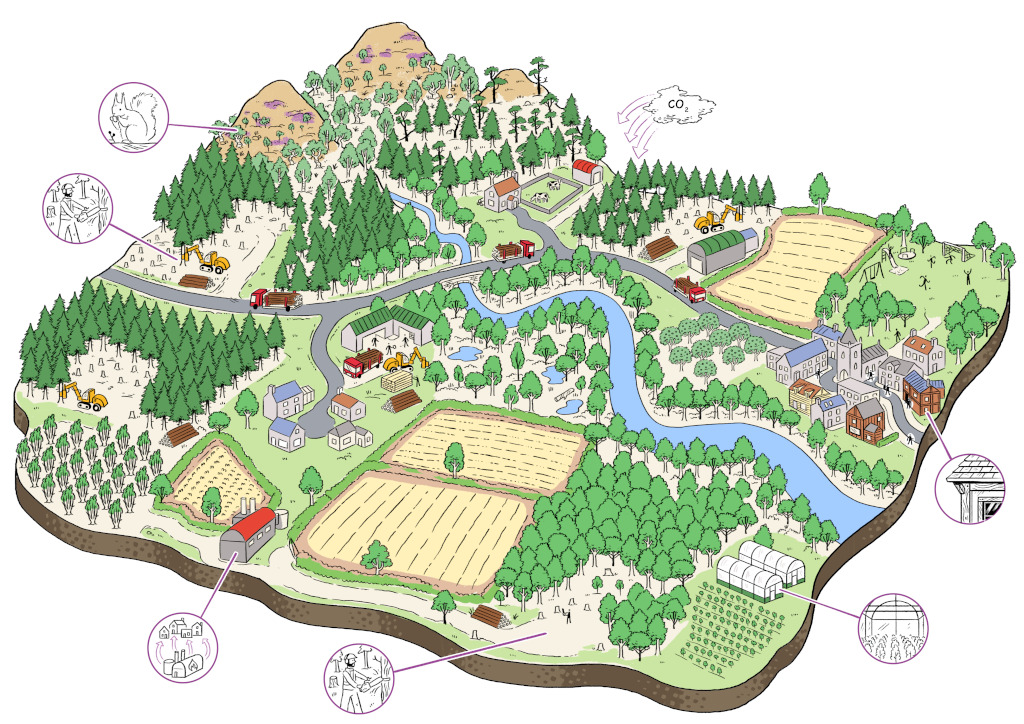Summary
Despite woodland expansion being advocated via a number of Scottish policy documents, barriers to woodland creation remain. These include contested views about land use, concerns about tradeoffs between ecosystem services. This research aimed to use existing published sources and stakeholder feedback and input to determine the values that different Scottish stakeholders have for woodland expansion, and to translate these into alternative storylines, or visions. We then identified areas of common ground and divergence between the visions.
Research Objectives
To use existing published sources and stakeholder feedback and input to determine the values that different Scottish stakeholders have for woodland expansion, and to translate these into alternative storylines, or visions. To identify areas of common ground and divergence between the visions.
Findings and Recommendations
We used a mixed-method approach combining a document analysis, a stakeholder workshop and semi-structured interviews to develop five visions (options) for woodland expansion in Scotland based on different priorities. The visions each had a particular focus: Green Gold (productive woodland), Wild Woodlands (naturally regenerating native woodland), Native Networks (native, semi-natural woodland), Woodland Culture (community empowered management) and Multiple Benefits (right tree in the right place).

The visions illustrate that at national level there is a great deal of consensus between stakeholders that woodland expansion can offer valuable public benefits, and that mechanisms should be put in place to provide long-term funding for these. Important areas of divergence include compatibility of woodland with current agricultural and sporting practices, and the extent of Land Reform and Community Empowerment. ‘Landscape scale’ collaboration and decision-making is widely favoured for governing decisions about woodland expansion and other land use changes.
By articulating the range of different objectives for woodland expansion, and capturing stakeholder suggestions for how governance could be adapted to achieve each vision, the results provide a synthesis of potential overarching ways forward for woodland expansion policy. The visions have also stimulated dialogue between national level stakeholders, suggesting they may be able to support necessary discourse as part of strategic land use planning.
Downloads
Funding & Partners
- This work was funded by a NERC doctoral training partnership grant (NE/L002558/1) in collaboration with Forest Research and the Scottish Forestry Trust as part of Vanessa Burton's PhD.

